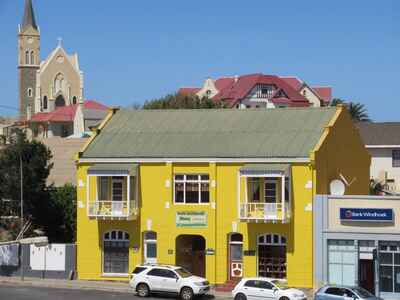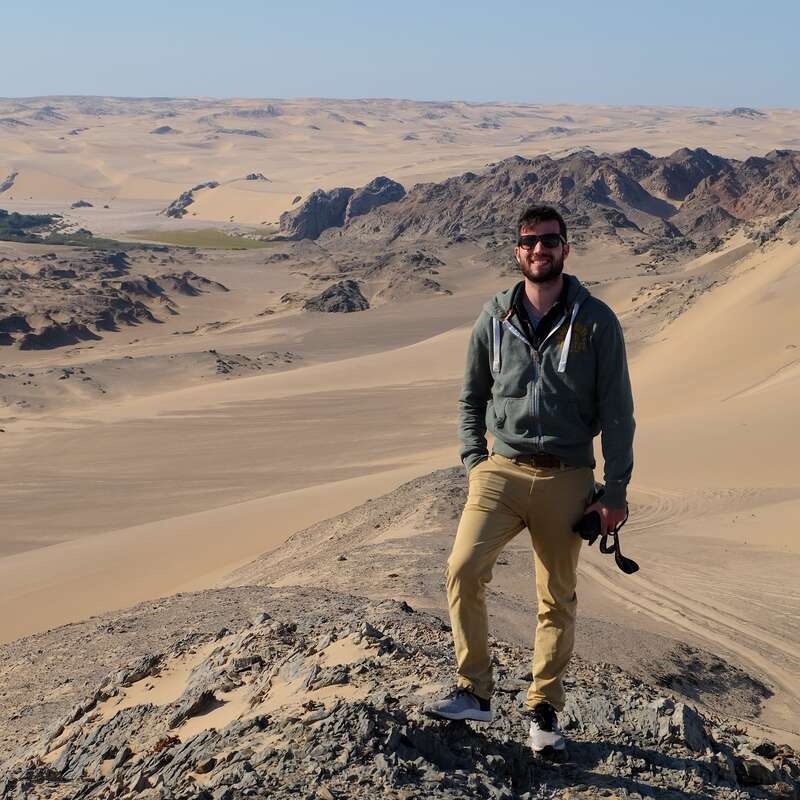About Haus Sandrose
Haus Sandrose is a small owner-run guesthouse that offers comfortable and friendly self-catering accommodation ...
... in the harbour town of Lüderitz. It is centrally located and within easy walking distance of the waterfront and the small selection of shops in town.
We thought Haus Sandrose was a charming and friendly alternative for those seeing something other than the large Nest Hotel. They only offer self-catering, but as there are well stocked supermarkets and a few nice restaurants in Lüderitz, this would work well.
Accommodation
4 apartments
Children
All ages.
Open
All year
Activities

4WD Safari

Birdwatching

Boat trip

Fishing

Private activities

Self-guided walking
Traveller reviews of Haus Sandrose
3 real, un-edited reviews from Expert Africa's travellers.
Arrived 17 Sep 2019, 2 nights
"Haus Sandrose Review"
Overall rating: Good
Arrived 5 May 2018, 1 nights
"Haus Sandrose review"
Overall rating: Good
Arrived 26 Oct 2017, 3 nights
"Good base"
Overall rating: Excellent
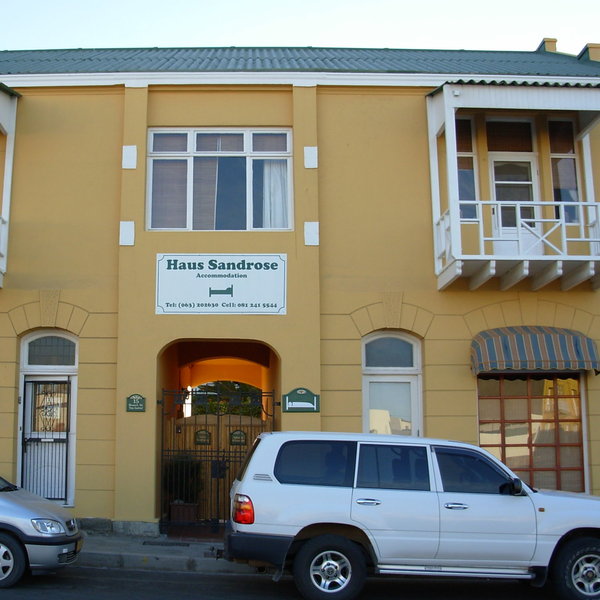
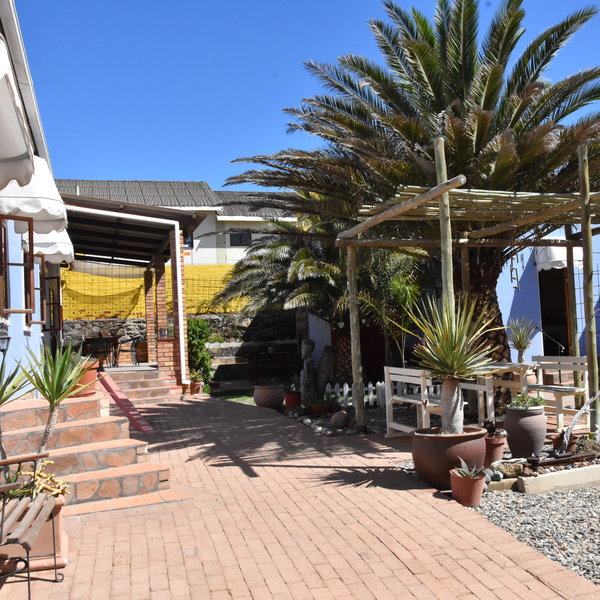
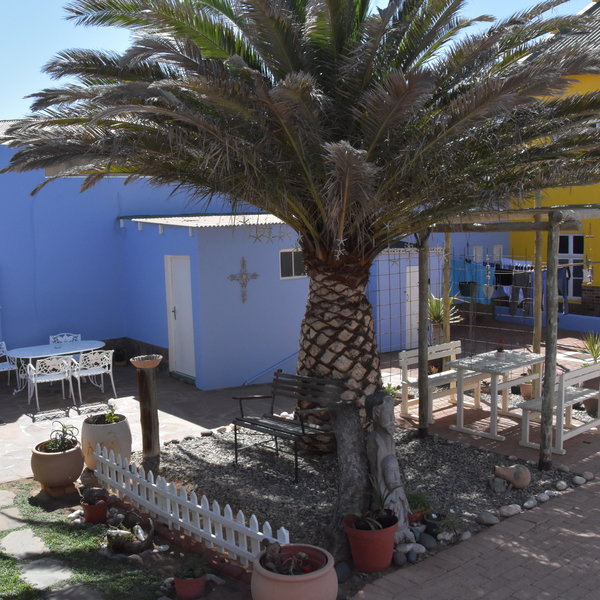
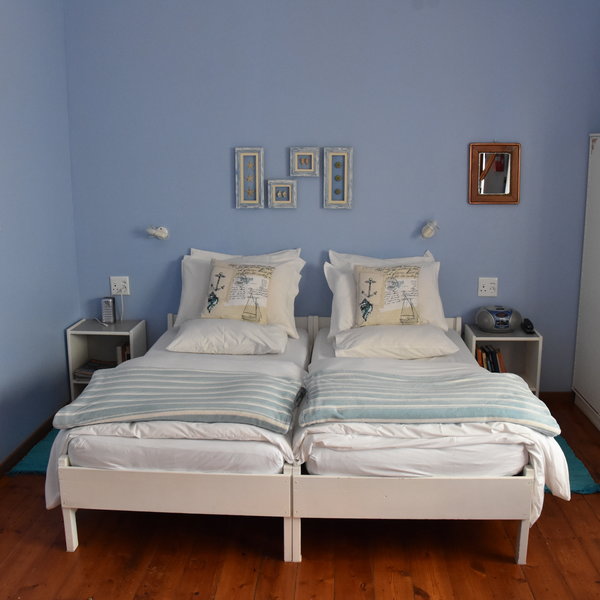
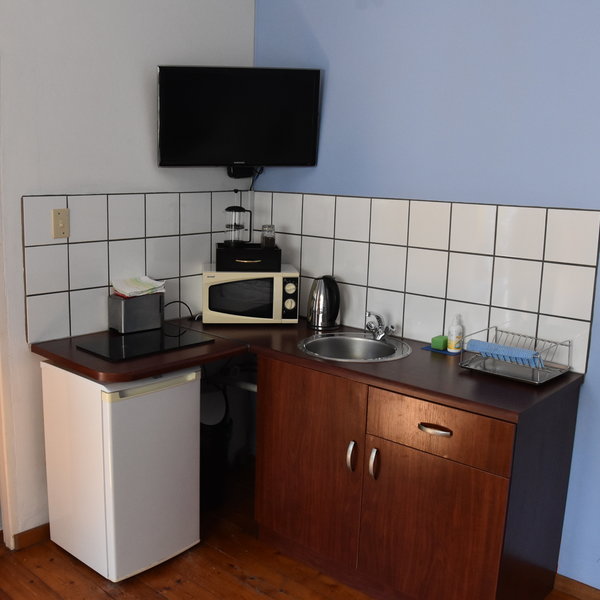
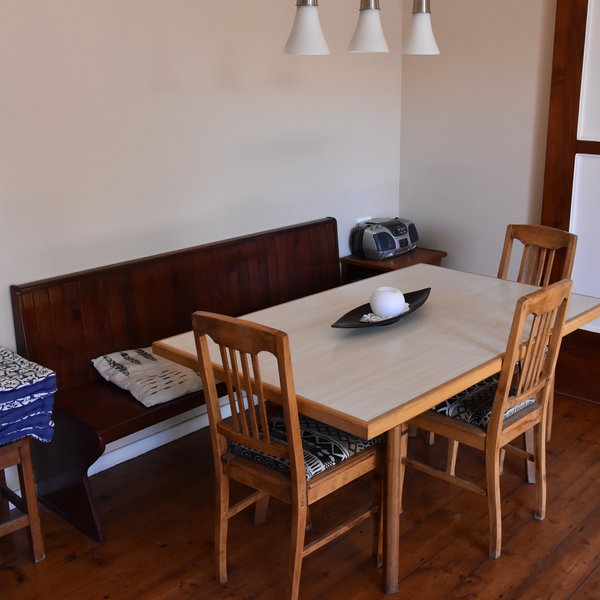
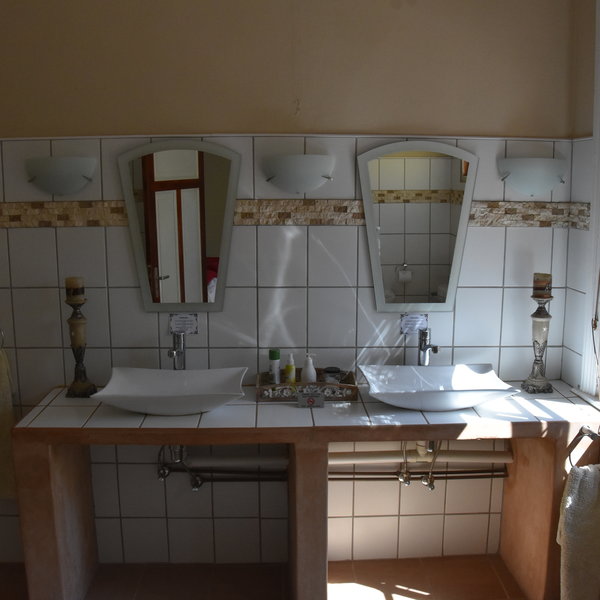
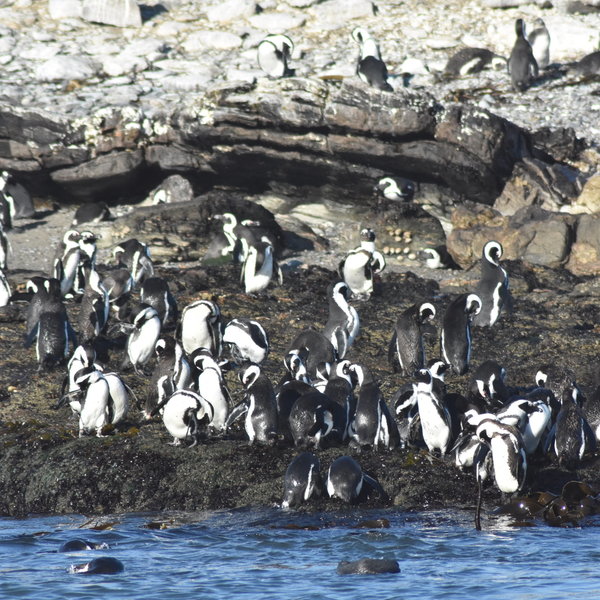
Expert Africa's gallery
When we travel we take lots of photos ourselves to give you a real and un-edited view of the trips. See our 9 pictures of Haus Sandrose to get the candid view.
View galleryHaus Sandrose: Our full report
Haus Sandrose is a small owner-run guesthouse that offers comfortable and friendly self-catering accommodation ...
... in the harbour town of Lüderitz. It is centrally located and within easy walking distance of the waterfront and the small selection of shops in town.
Haus Sandrose with it's bright yellow exterior is hard to miss on Luderitz's Bismark Street. The 4 units are all slightly different and they are arranged around a pleasant courtyard. The brightly coloured theme continue as the external walls of the rooms are painted in a pastel blue, complementing the town's coastal location.
The accommodation each offer something slightly different but they all have self-catering facilities. Halifax is a sunny en suite double room, decorated in blues and whites. It sleeps two people and is furnished with a TV, telephone and whicker couch. The small breakfast corner forms part of the room and is equipped with a small kitchenette, including a microwave, 2 plate stove, sink, toaster, crockery & cutlery, and a fridge. Tea and coffee is supplied and there is a kettle and a coffee plunger. There's also an en-suite bathroom with a shower and a toilet.
Bogenfels has an orange theme, it is a twin room with an open-plan kitchen and private bathroom with a shower and toilet. The room is furnished with a TV, telephone and two-seater bench. The kitchen has a fridge, table and chairs, fridge, two-plate stove with grill and a toaster, as well as a microwave and cutlery and crockery. There is also a kettle and a plunger with coffee, tea and sugar supplied.
Grosse Bucht and Klein Bucht are a much bigger unit suitable for families, but can also be booked separately. Grosse Brucht is also wheelchair friendly. Both of these rooms have their own kitchenette area, and are joined with an inter-leading door. Both are smartly decorated and have their own bathroom with a shower and toilet.
Each room has a small private courtyard and garden area where guests can sit and relax. Haus Sandrose has an outdoor barbeque, which is shared, amongst the rooms.
Vehicles can be parked in front of the guesthouse where there is a 24 hour guard on duty.
Activities
4WD Safari
Birdwatching
Boat trip
Fishing
Private activities
Self-guided walking
Families & children
- Attitude towards children
- Haus Sandrose welcomes children of all ages.
- Property’s age restrictions
- No ages restriction
- Special activities & services
- None
- Equipment
- Kleine Brucht and Grosse Brucht share an inter-leading door so that they can be used as a spacious family room.
- Generally recommended for children
- The property welcomes children of all ages however they do not have any equipment for very young children. It is also located on one of Lüderitz's busier roads so vigilance would be required for parents bring more mobile children here.
Food & drink
- Usual board basis
- Room Only
- Food quality
- Haus Sanrose is self-catering and so does not offer any food at all.
Getting there
- Location
- Luderitz, Namibia
- Ideal length of stay
- Haus Sandrose has a preference for guests who book for two or more nights.
- Directions
- Haus Sandrose is situated on Bismarck Street in central Lüderitz.
- Accessible by
- Self-drive
Communications
- Communications
- There is good mobile phone signal in Lüderitz and the lodge has free WiFI.
- TV & radio
- Each unit at Haus Sandrose has a television.
- Water supply
- Mains
- Water supply notes
- Each unit has flush toilets, hot and cold running water.
Health & safety
- Malarial protection recommended
- No
- Medical care
- Lüderitz has a hospital and a pharmacy.
- Dangerous animals
- Low Risk
- Security measures
- There is a 24 hour guard watching over the vehicles outside.
- Fire safety
- A fire extinguisher is located in every room.
Useful info
- Disabled access
- On Request
- Laundry facilities
- Haus Sandrose can offer a laundry facility for an extra charge.
- Money
- No currency exchange facilities are available.
- Accepted payment on location
- Visa and Mastercard are accepted for card payments whilst South African rand and Namibian dollars are accepted currencies for cash payments.
Plan and book your trip with Expert Africa
All of our trips are tailor-made, so we'll always adapt them to suit you. Talk to an Expert and let us plan and arrange your perfect trip.

Talk to an Expert
Call or email us now! We’ll match you with the Specialist in our team who is best suited to help you. Then together we can start planning your trip.

Set up your itinerary
Based on our experience and your ideas, your specialist will create a detailed, costed itinerary. We’ll refine it together, until we have a trip that you’re perfectly happy with.

Prepare for your trip
The same Specialist will make the seamless arrangements for your trip, send you detailed travel documents, and be available to answer any questions before you depart.

Travel with peace of mind
After you set off, you’ll be cared for by our partners in Africa, most of whom have worked with Expert Africa for decades. And if you ever need us urgently, we’re available 24/7.

When you return
We love to learn about your trip, and so will always be grateful if you’ve the time to give feedback to your Specialist when you return.
Haus Sandrose's location
Look closer at the environment and surroundings of Haus Sandrose.
Excursions from Haus Sandrose
Optional extra day-trips and excursions possible whilst you're staying at Haus Sandrose. Talk to us: these are usually best arranged before you go.
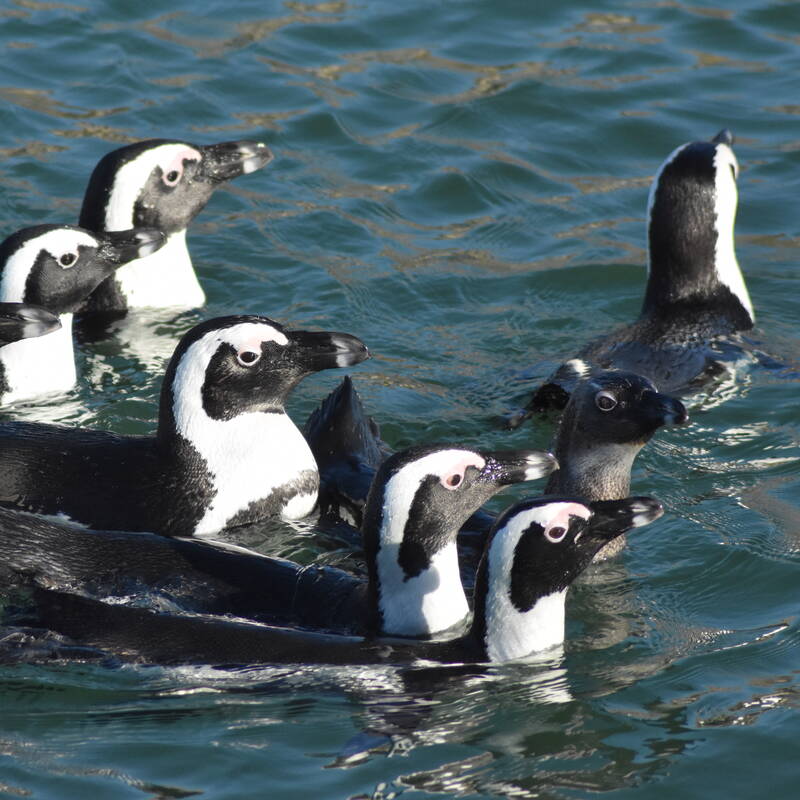
Halifax Island boat trip
2 hours
Climb aboard the comfortable catamaran Zeepaard in search of the marine life of Namibia’s wild coastline – among them Cape fur seals, Heaviside dolphins, African penguins and perhaps even humpback whales.
More about Halifax Island trip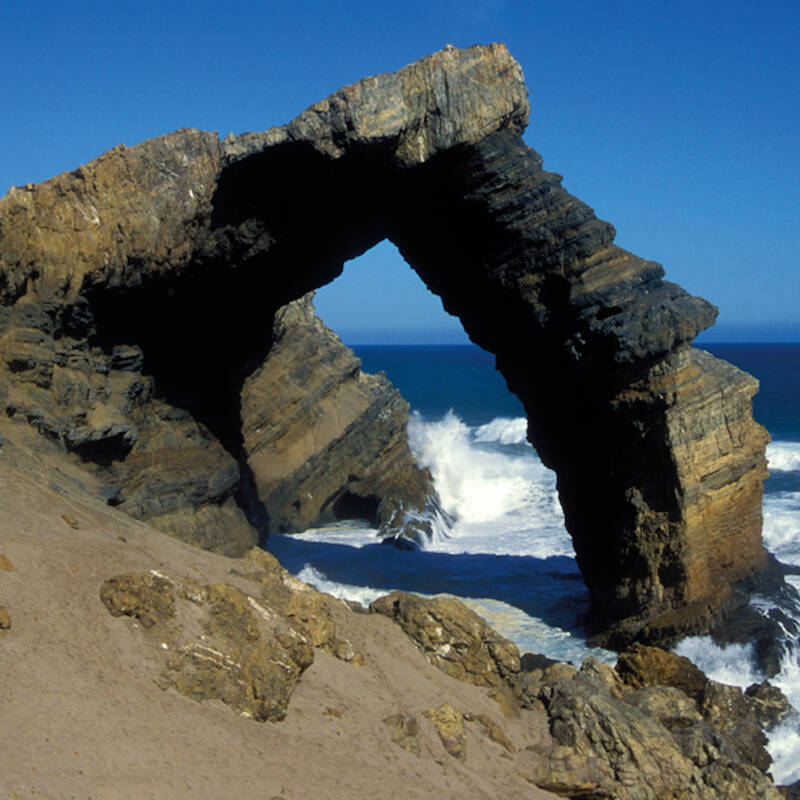
Sperrgebiet tour
Full day, including lunch
Discover the hidden gems of the Sperrgebiet National Park on this exceptional all-day trip. There may no longer be diamonds for the taking, but in their place you’ll find ghost towns, the rusting relics of the diamond industry, geological formations, and extraordinary desert flora, largely untouched for generations.
More about Sperrgebiet tourOther lodges in Luderitz
Alternative places to stay in this same area.
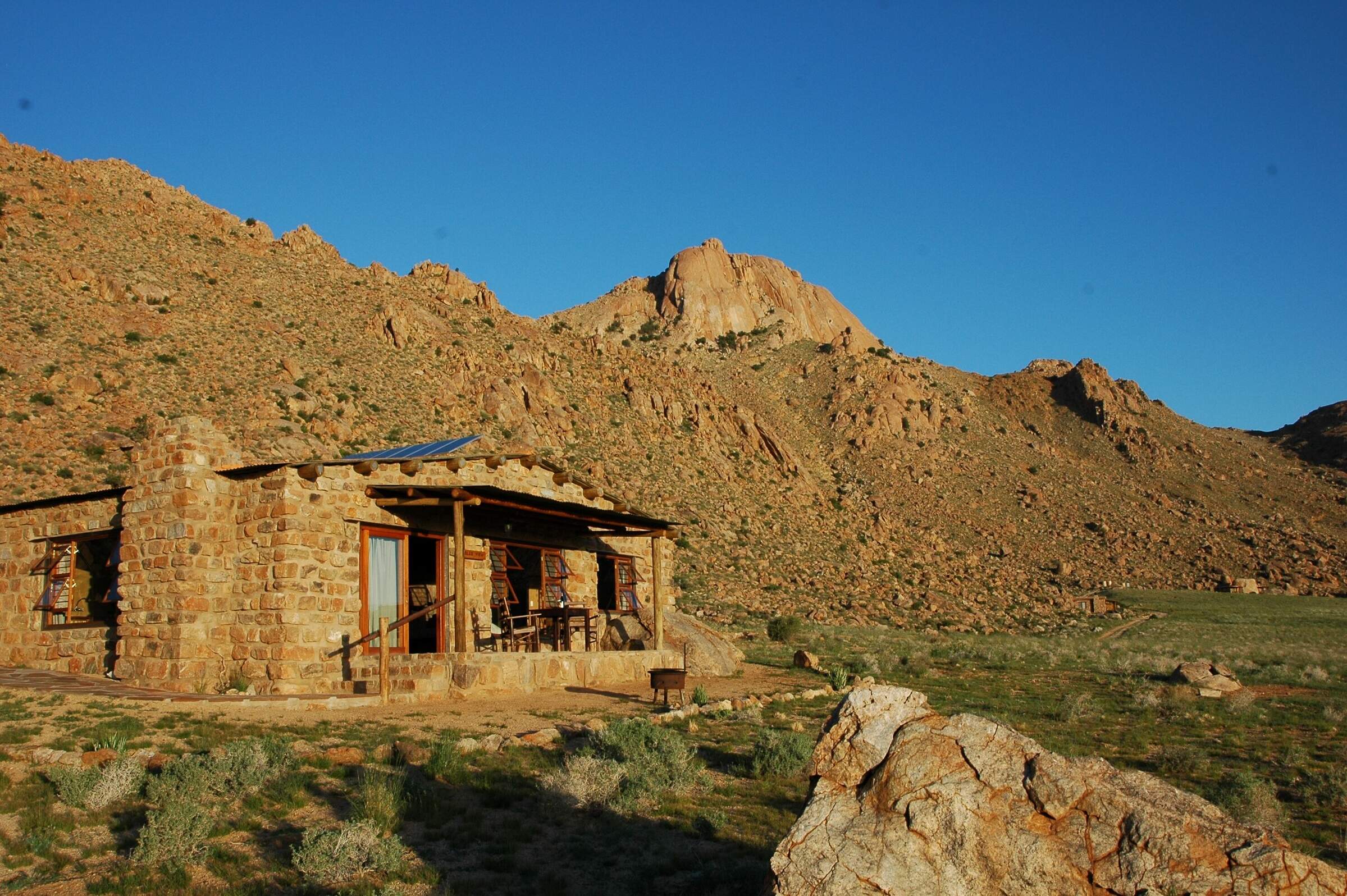
Eagle's Nest
The rustic chalets at Eagle's Nest on the Klein-Aus Vista reserve make a scenic base for hiking in the mountains, or just to enjoy the solitude.
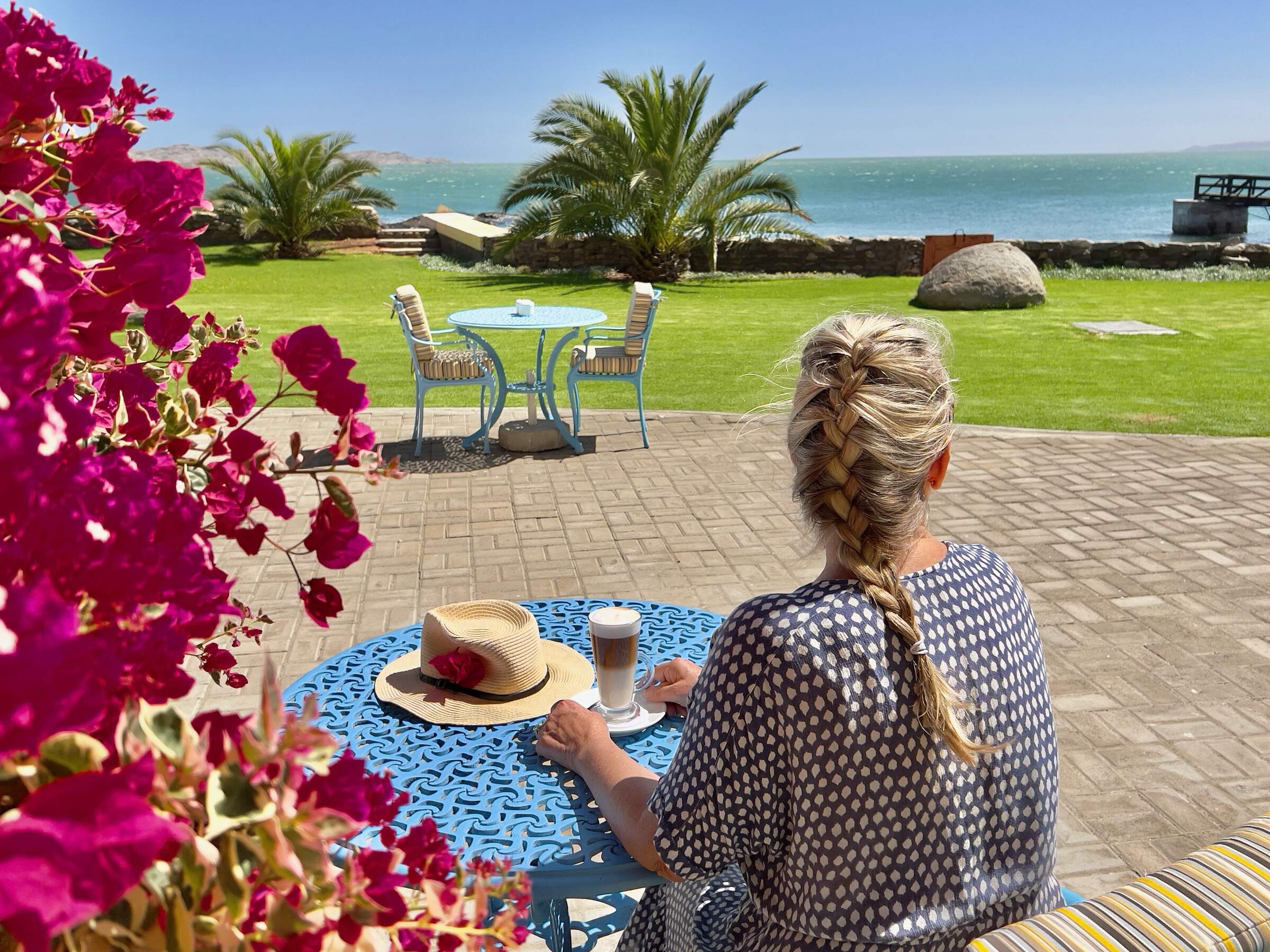
Nest Hotel
With ocean views from all its rooms, the Nest Hotel is perfectly placed to appreciate the best of Lüderitz.
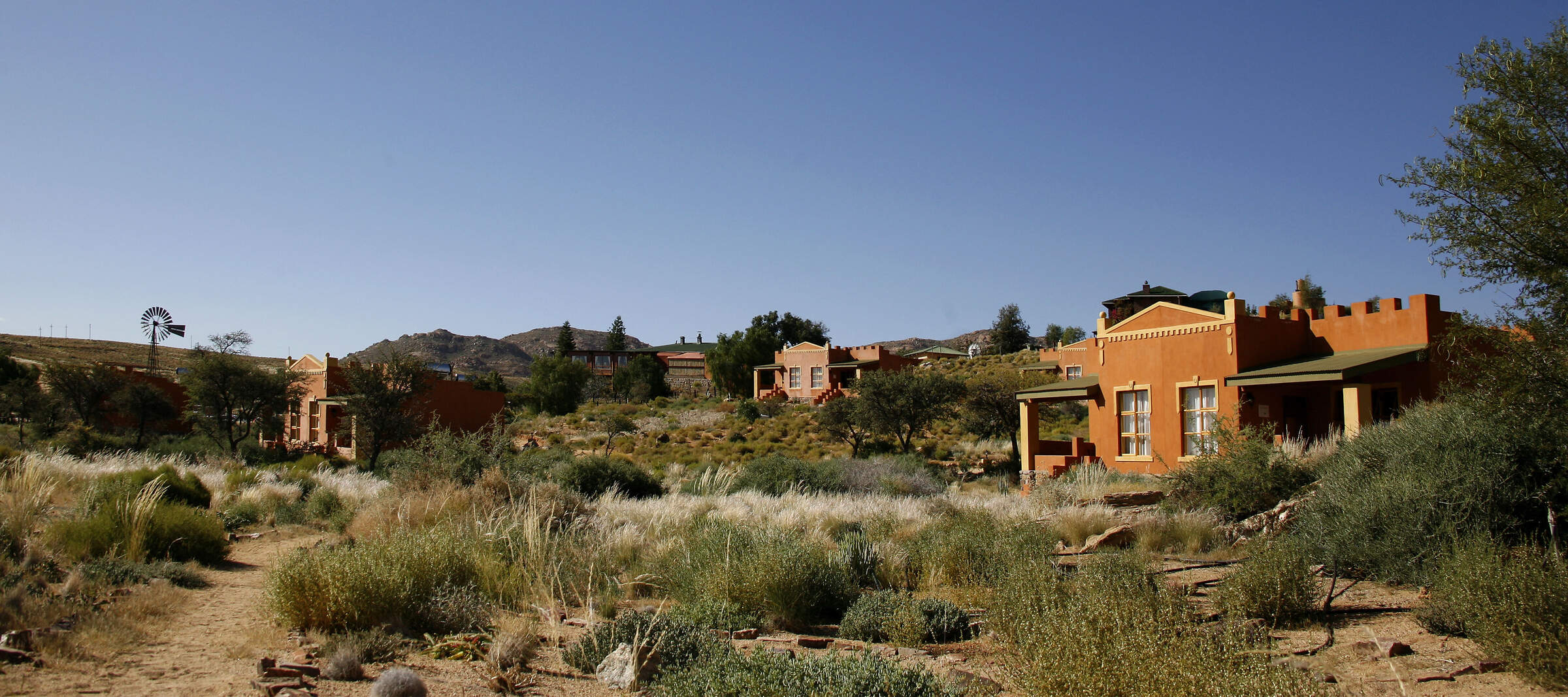
Desert Horse Inn
On the edge of the Namib Desert, the Desert Horse Inn makes a comfortable base for hiking, visiting Lüderitz, or seeking out the area's feral horses.
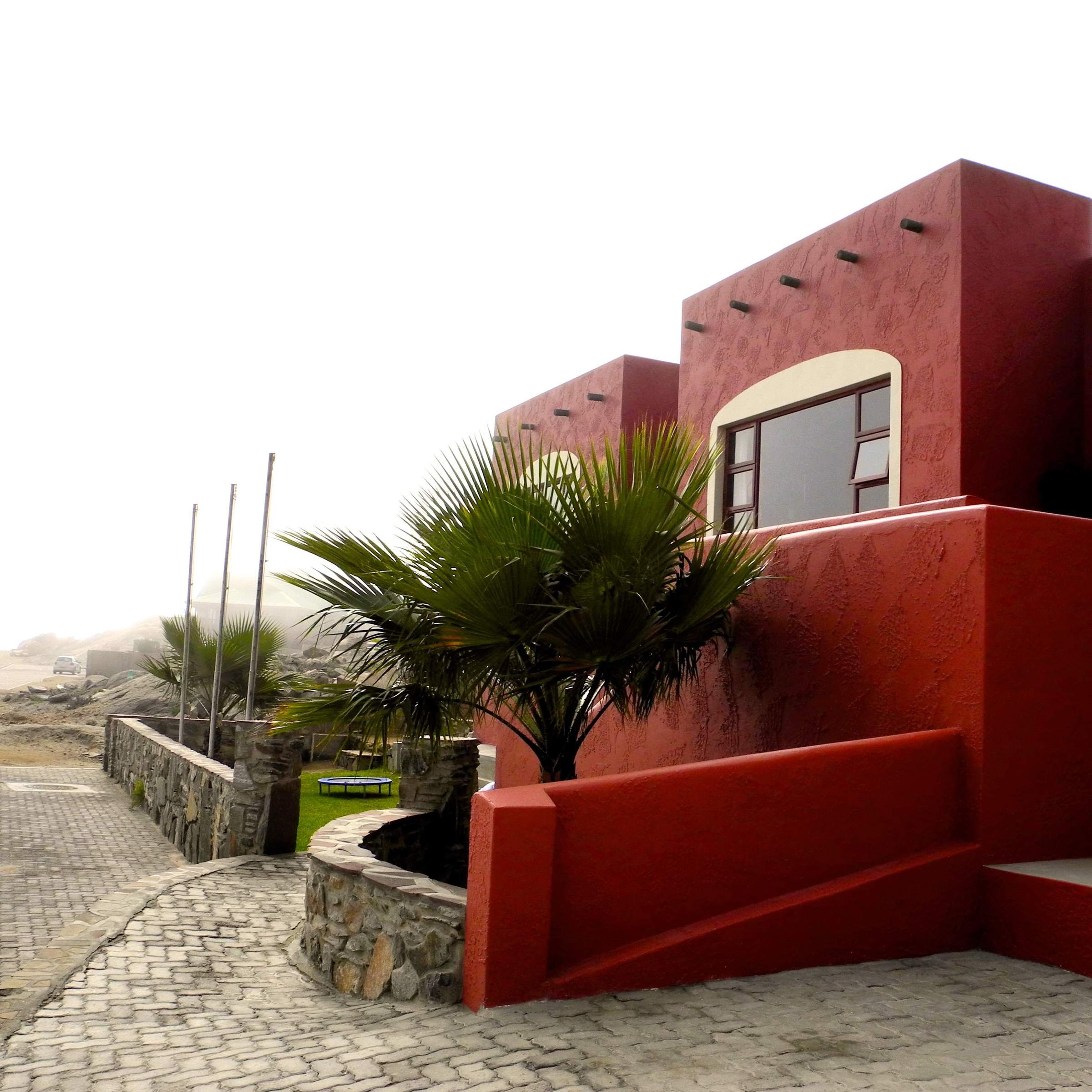
Island Cottage
Island Cottage offers simple but comfortable self-catering apartments in an attractive if desolate location overlooking Lüderitz Harbour.
When to go to Luderitz
Our month by month guide: What it's like to visit Haus Sandrose in Luderitz
Jan
Feb
Mar
Apr
May
Jun
Jul
Aug
Sep
Oct
Nov
Dec
Namibia in January
January is at the heart of Namibia’s rainy season. However, as you’d expect from a country dominated by desert and semi-desert environments, the rains are often (but not always) weak and usually quite localised. Some days will be clear, the strong sun raising temperatures to around 30ºC/86ºF; on others humidity and clouds build, sometimes culminating in spectacular thunderstorms. In extreme cases, these generate flash-floods which race down the beds of ephemeral rivers.
Across the country, the greening landscape makes a refreshing change, especially in desert areas. Many birds are in full breeding plumage and migrant species are here in force. In the north, where the rains are more reliable, the abundant water and food allows wildlife to disperse, making it trickier to spot.
- Variable weather: clear, hot & dry, or cloudy & humid with some rain
- Occasional, highly localised thunderstorms
- Many animals with young; birdlife at its most spectacular
- Wildlife dispersed & harder to see, especially in Etosha & the Caprivi
- Very few tourists (apart from the New Year) so rates mostly low
Our view
This is not a great time to visit
Weather in January
Namibia in February
February is the wettest month, but as Namibia is dominated by deserts, the rains are often weak and patchy. The variation in weather across Namibia is significant, too; the central highlands and Caprivi can see some heavy rain. More typically, some February days are clear with a hot, strong sun; others are cooler as cloudy skies build and, sometimes, culminate in short, spectacular thunderstorms. Occasionally these generate flash-floods, bringing ephemeral rivers to life and making travel more challenging.
Across the country, the landscape feels green and alive; insects and smaller animals are more easily seen, and many birds and animals are raising their young. However, small pools in the bush and thicker vegetation can make it hard to spot the wildlife.
- Variable weather: clear, hot & dry or cloudy & humid with some rain
- Occasional localised thunderstorms meander over the landscape
- The bush feels alive; birdlife is at its most spectacular
- Wildlife in Etosha & Caprivi is dispersed & harder to see
- Few tourists, so rates usually at their lowest
Our view
This is not a great time to visit
Weather in February
Namibia in March
March usually sees Namibia’s main rains tailing off, although actual precipitation varies hugely across the country and can be unpredictable from day to day. Many days will be clear, with a strong sun driving temperatures up. On others, clouds will build, and the late afternoon may see a short, spectacular thunderstorm. Such deluges reduce in both frequency and volume as the month progresses.
Across the country, landscapes are often vivid: a “green and pleasant land”. Many birds and animals are finishing raising their young, so smaller animals and insects are in evidence. In the north, where rains are generally heavier, pools in the bush and thicker vegetation can make it difficult to spot larger animals.
- Variable weather: clear, hot & dry or cloudy & humid with some rain
- Afternoon thunderstorms less common as March progresses
- Animals looking sleek and well-fed, after 3–4 months of plenty
- Wildlife in Etosha & Caprivi is dispersed & harder to see
- Few tourists visit during March, so rates often low
Our view
A good time to visit, with pros & cons
Weather in March
Namibia in April
Typically, April is dominated by dry weather; there’s an ever-decreasing chance of rain. Temperatures are now below their peak and continue to fall. Even so, days remain pleasant and warm, but there might be a slight chill in the air at night. The rains usually leave many parts of the country verdant and green, so animals are in fantastic condition – often with fast-growing young in attendance.
With the dust washed out of the atmosphere, photographers make the most of clear air, spectacular landscapes and healthy animals. Stargazers will have clearer night skies as the month progresses. In the game parks of Northern Namibia, water and food remain in plentiful supply, so finding big game can prove trickier than later in the year.
- Becoming drier &, especially at night, also cooler
- Few visitors, except around Easter, so rates remain low
- Wildlife in Etosha & Caprivi remains relatively hard to see
- Migrant birds have started to leave
- Fresh, clean air and often green, verdant landscapes
Our view
A good time to visit, with pros & cons
Weather in April
Namibia in May
By May, Namibia is usually drying out fast as the rains have ended. If they’ve been good, then the land remains green, but wildlife starts to congregate at more permanent water sources. Over much of the country the air quality and clarity can be amazing, making this an ideal month for photography.
Typical days are warm, with crisp, clear mornings and clear blue skies. Evenings are usually cool, and temperatures may dip below 10ºC (50ºF) overnight. Many lodges still charge “low season” prices, although with Namibia’s increasing popularity in recent years, some have started to introduce higher “shoulder season” rates.
May’s good-value rates, increasingly good wildlife sightings, beautiful landscapes and crystal-clear air combine to make this one of our favourite months in Namibia.
- Lovely weather: dry, warm days & cool nights
- The country is drying out although many landscapes remain green
- Fantastic air clarity – ideal for keen photographers
- Visitor numbers are often still low, mirrored by lodge rates
- Wildlife is starting to congregate more around remaining water
Our view
A very good time to visit
Weather in May
Namibia in June
Namibia is dry again. Skies are blue and usually largely cloudless. Days are lovely: warm and dry; nights are cold, sometimes below freezing in the desert. Most swimming pools in Namibia are always outdoors, making them too cold for all except the very dedicated.
Take a warm hat and gloves for game drives, where dawn and dusk will feel particularly chilly. In the north, especially Etosha, wildlife viewing is now into its dry-season pattern, focusing around the waterholes – though the park is still not busy.
Photographers come for superb air clarity, with minimal dust or smoke in the air. Historically, June rates have been low. However, with Namibia’s increasing popularity many lodges now count it amongst their “high-season” months, and request higher prices.
- Clear, bright days with blue skies; cold nights, mornings & evenings
- Great air quality, especially welcome for photographers
- “Shoulder season” for some lodges: lodge rates moderate
- Wildlife gravitates to waterholes, making game-viewing productive
- Some greenery in the landscape, depending on the last rains
Our view
A very good time to visit
Weather in June
Namibia in July
Reliably warm daytime temperatures (upwards of 20ºC/70ºF) and good wildlife sightings make this a popular month to visit Namibia. Rain would be very unusual indeed and clear skies make for great photographs. Once the sun sets, though, temperatures cool rapidly bringing cold nights that may dip below freezing in the desert. Be prepared: dress in layers and expect early-morning and late-afternoon drives, and anywhere coastal, to be cold.
As the land dries and vegetation shrivels, game congregates beside drinking water: Etosha’s waterholes are busy with animals. Across the country, lodges charge “high season” rates; many are fully booked a year or more in advance, especially during European school holidays (from the latter half of July to late August).
- Dry days, warm in the sun, with crisp, cold nights
- Cloudless skies: July is usually superb for stargazing
- The beginning of European school holidays so more families travelling
- Peak season: so high rates and many lodges fully booked far in advance
- A fantastic time of year for wildlife watching, particularly in Etosha
Our view
A very good time to visit
Weather in July
Namibia in August
August is the height of Namibia’s “winter”. Expect cloudless skies and plenty of warm sun in the day, but nights down to freezing in the desert. Dress in layers and bring warm clothes (including hats and gloves) for chilly starts and evenings. Only the hardiest even contemplate using outdoor pools.
It’s 3–4 months since any rain, so the land is dust-dry and much vegetation is golden brown. Many landscapes appear sparse and harsh. Wildlife congregates around available water sources, helping to guarantee good animal sightings.
Namibia is never really “busy” by the standards of Europe or the USA, but August is the most popular time to visit, especially for families. Book early (over a year in advance) if you want to stay at the best lodges.
- Dry days, warm in the sun; cold mornings, evenings & nights
- Cloudless skies in the day; spectacular stars at night
- Busy by Namibian standards: family rooms in particular demand
- Peak season: so high rates and many lodges fully booked far in advance
- A fantastic time of year for wildlife watching, particularly in Etosha
Our view
Fantastic: the very best time to visit
Weather in August
Namibia in September
September is a month of blue, cloudless skies and fantastic wildlife viewing. Rain is almost unheard of. As the month progresses, the days and nights get warmer. In some areas, daily maximums hit around the low 30s Celsius, although low humidity ensures this feels comfortable. The contrast makes the nights seem very cold. The air is becoming dustier, occasionally augmented by smoke from fires – so becoming hazy for photographic purists.
In the national parks, animals congregate around remaining water sources – making September one of the best months for game viewing. Hence it’s one of Namibia’s most popular months for visitors: a “high season” month that is often the time of choice for safari aficionados.
- One of the best months for wildlife viewing
- Warm days & cold nights, with temperatures rising during the month
- Many plants have faded from green to golden brown
- Air can be hazy – with dust & sometimes smoke
- High season rates; many lodges & camps are full 9 months in advance.
Our view
Fantastic: the very best time to visit
Weather in September
Namibia in October
Namibia is usually at its hottest and driest in October. Temperatures build as the month progresses; towards the end, daily highs may exceed 40ºC/100ºF, though with humidity close to zero, even this rarely feels oppressive.
In exceptional years, isolated rain showers may fall in late October. More usually, the end of the dry season sees wildlife watching at its best, particularly in Etosha. The place feels like a desert as spectacular herds of thirsty animals gather around the available water. October is popular amongst wildlife enthusiasts and commands peak-season prices, even if dust and smoke may make the air hazy, challenging photographers. Visitor numbers can fade towards the end of the month, allowing a window for last-minute bookings.
- Probably the most spectacular month for wildlife-viewing in Etosha
- Hot and dry: much of the country feels like a desert
- The air can be hazy with dust & smoke
- It’s peak time to visit, so expect high season rates
- Lodges & camps are full, especially early in October
Our view
A very good time to visit
Weather in October
Namibia in November
November is always a bit unpredictable: sometimes dry and hot; sometimes cloudier and cooler. Typically, mornings are hot and cloudless and clouds appear in the afternoon. Humidity builds and eventually breaks, resulting in spectacular thunderstorms that bring convection rainfall in late afternoons. Such storms are typically sparsely distributed and highly local – being completely absent from desert areas, for example. Places that do get good rain will flush green, with a tangible feeling of new life softening the landscapes. Many mammals give birth to their young.
Once any rains come, wildlife dissipates in search of food, and game viewing in Etosha becomes harder. Conversely, this is a great time for birdwatchers, with migrant species in breeding plumage.
- A very interesting, variable month, depending on the rains
- With rains come an amazing explosion of both vegetation & new life
- Wildlife viewing better in Damaraland than Etosha if it has rained
- Shoulder season: mid-range rates offer great value
- Away from the Namib, showers are more likely later in the month
Our view
A good time to visit, with pros & cons
Weather in November
Namibia in December
December is the first “proper” month of Namibia’s rainy season, and one of its hottest. Clear mornings give way to building clouds and, with luck, the occasional short, spectacular thunderstorm: refreshing and cleansing. These are often highly localised and generally warmly welcomed: most Namibians love rain!
Rains clear the air of dust. Even relatively short showers enable plant life to erupt, carpeting this thirstland in green and providing food for the young animals which abound. Animals disperse widely, which can make game viewing challenging. Many birds are breeding and so sporting their most colourful plumage.
Christmas and the New Year fall within local “summer holidays” – so places to stay can be surprisingly busy, especially in and around coastal towns, where temperatures are cooler.
- Hot and humid; sometimes refreshed by cooling showers
- Landscapes flushed green if/where there has been rain
- A tangible life and energy amidst this often green & pleasant land
- Very photogenic: blooming deserts amidst crystal-clear air
- Best time for birdwatchers; larger animals harder to spot
Our view
This is not a great time to visit
Weather in December

Looking for inspiration on where to travel next?
Visit our trip chooser to explore your options and find inspiration for your perfect African adventure
Inspire me